According to the National Institute on Aging, nearly 35% of adults aged 45+ report chronic loneliness, while the CDC notes that 1 in 4 seniors experiences a fall each year. The fear of declining health, isolation, and loss of purpose doesn’t have to define this chapter of life.
Enter the 5 pillars of wellness – a comprehensive, evidence-based framework that transforms how we approach healthy aging.
This proven model goes beyond basic medical care to create a foundation for happiness, connection, and vitality throughout retirement. When properly implemented, these pillars work together to address the very concerns that keep families awake at night.
Let’s explore how each pillar builds a foundation for thriving, offering both peace of mind for families and renewed purpose for retirees.
Understanding the 5 pillars of wellness
The 5 pillars of wellness represent a revolutionary shift from traditional care models that focus solely on medical needs. This framework recognizes that true wellness encompasses every aspect of human experience, creating a roadmap for meaningful, healthy aging.
The 5 interconnected pillars include:
- Physical wellness focuses on maintaining strength, mobility, and overall health through regular movement, balanced nutrition, and preventive care. This pillar serves as the foundation, enabling participation in all other wellness activities.
- Social wellness addresses the critical need for meaningful connections and community belonging.
- Intellectual wellness keeps the mind sharp and engaged through lifelong learning, creative pursuits, and cognitive challenges.
- Purposeful wellness helps individuals maintain meaning and direction in retirement, whether through volunteering, mentoring, or pursuing long-held dreams.
- Spiritual wellness nurtures inner peace and connection to personal values, providing emotional resilience during life’s transitions. This pillar encompasses both religious practices and secular mindfulness approaches.
Research published in the Journal of Aging and Health demonstrates that seniors participating in multi-dimensional wellness programs experience 25% fewer hospitalizations and report higher quality of life scores compared to those receiving traditional medical care alone.
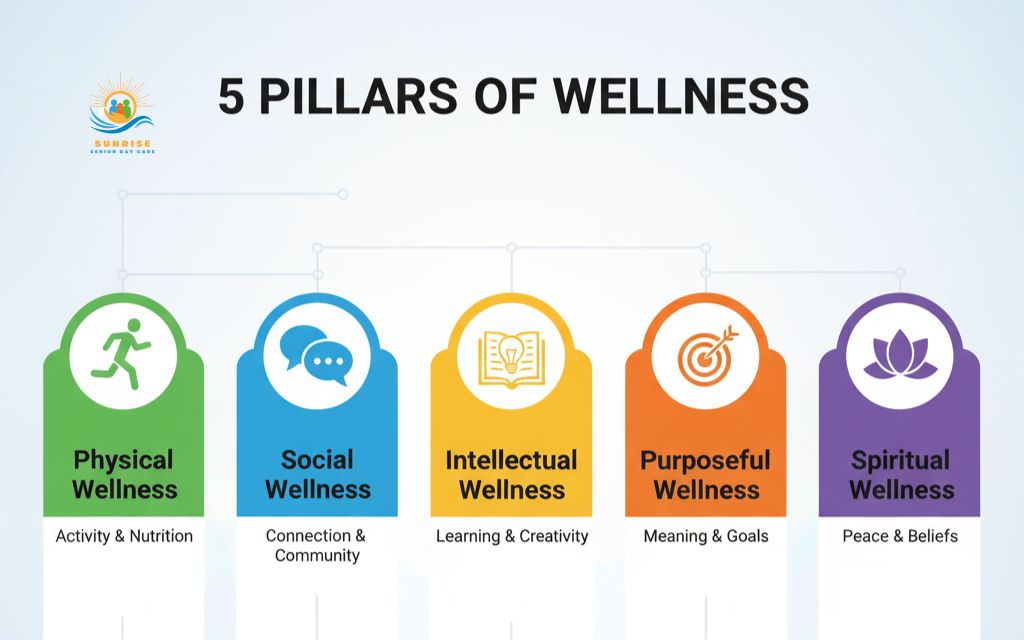
Physical wellness: Strength for every stage
Physical wellness forms the cornerstone of healthy aging, yet it’s often the area where seniors face the greatest challenges. The good news? Even small, consistent changes can yield remarkable results, regardless of your starting point.
Maintaining mobility becomes increasingly important as we age. The National Council on Aging reports that exercise reduces fall risk by 23% and can prevent or delay the onset of chronic conditions like diabetes and heart disease. Some examples:
- Chair yoga classes improve flexibility and balance.
- Walking clubs encourage cardiovascular health through gentle exploration of local trails.
- Water aerobics programs provide low-impact exercise that’s easy on joints and building strength.
Nutrition also plays an equally vital role in physical wellness. Many seniors struggle with meal preparation, leading to poor dietary choices that compound health issues.
5 simple tips for better nutrition and daily activity:
- Start your morning with a protein-rich breakfast to maintain energy levels throughout the day, including eggs, Greek yogurt, or nut butter to fuel both body and brain,…
- Take the stairs when possible, or if stairs aren’t accessible, try standing and sitting from a chair 10 times to build leg strength and improve balance.
- Incorporate fruits and vegetables into every meal. Aim for at least 5 servings daily.
- Stay hydrated by keeping a water bottle nearby and sipping throughout the day.
- Schedule movement breaks every hour, even if it’s just stretching or walking to the window. Small, frequent movements are more beneficial than one long exercise session.
Evidence consistently shows that seniors who maintain active lifestyles experience fewer hospitalizations, better cognitive function, and greater independence.
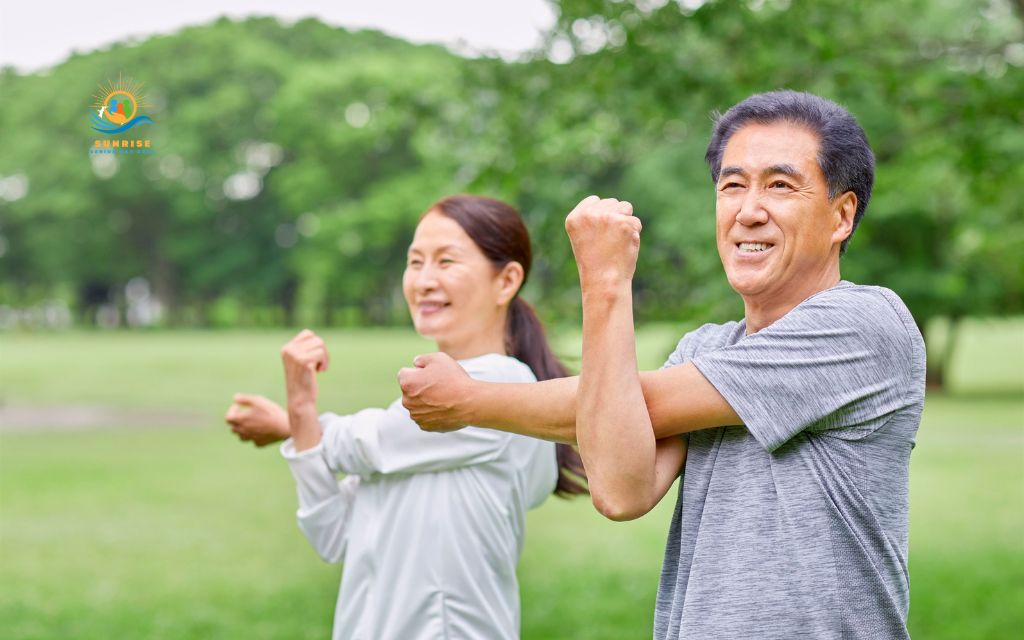
Social wellness: The antidote to loneliness
Loneliness has become an epidemic among older adults, with health consequences as severe as smoking 15 cigarettes daily. The isolation that often accompanies aging impacts physical health, cognitive function, and overall mortality risk.
Social wellness encompasses far more than occasional family visits. It involves creating meaningful connections, maintaining existing relationships, and building new friendships within a supportive community environment.
When seniors feel truly seen, heard, and valued, their entire outlook on life transforms.
Tips for supporting mental health and social wellness:
- Create opportunities for meaningful conversation by joining or starting a discussion group focused on topics that interest you, whether current events, personal histories, or shared hobbies.
- Maintain connections with family and friends through scheduled video calls, letters, or shared activities.
- Consider adopting a pet or volunteering with animals if appropriate. The unconditional love and routine care involved provide both purpose and companionship.
- Practice active listening when engaging with others. Ask follow-up questions and show genuine interest in their stories and experiences.
- Participate in intergenerational activities when possible. Sharing wisdom with younger generations and learning from their perspectives creates mutually beneficial relationships.
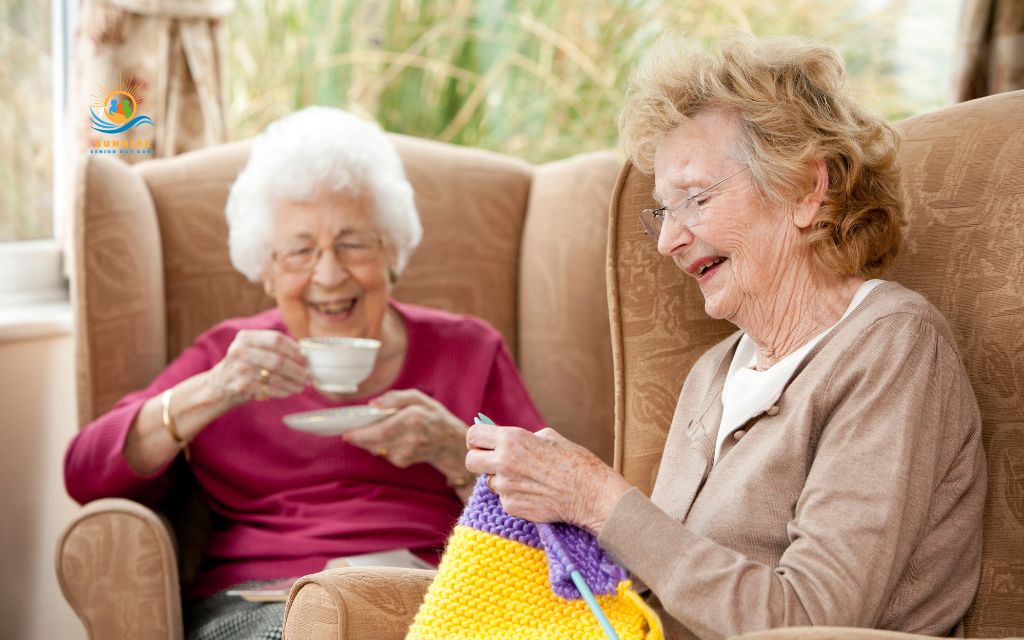
Intellectual wellness: Keeping the mind sharp
Intellectual wellness involves challenging the mind through new learning experiences, creativity, and problem-solving activities that maintain cognitive sharpness and prevent mental decline.
Research demonstrates that seniors who engage in intellectually stimulating activities experience slower rates of cognitive decline and maintain better memory function. Activities like reading, playing strategic games, learning new skills, or engaging in complex conversations literally rewire the brain, creating new neural pathways that support mental agility.
Tips for supporting intellectual wellness:
- Learn something new every month, whether it’s a few words in a foreign language, a cooking technique, or understanding how something works.
- Engage in activities that require strategy and planning, such as chess, crossword puzzles, or planning imaginary trips to places you’d like to visit.
- Read materials outside your usual preferences to expose your brain to new ideas and writing styles.
- Practice explaining complex topics to others, as teaching reinforces your own understanding and also strengthens communication skills.
- Limit passive entertainment in favor of active mental engagement. Instead of simply watching television, discuss the programs with friends or research topics that interest you.
The key to intellectual wellness lies in embracing a growth mindset – the belief that capabilities can be developed through dedication and effort.
When seniors approach new challenges with curiosity rather than fear, they discover that learning can be just as exciting at 80 as it was at 18.
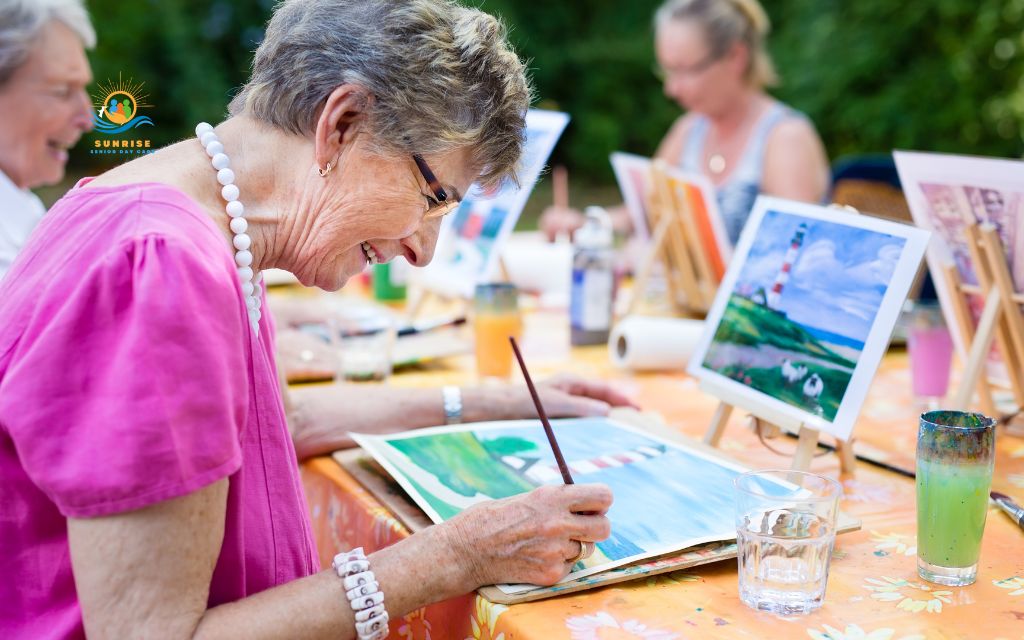
Purposeful wellness: Living with meaning
Retirement often brings an unexpected challenge: the loss of identity and direction that once came from career and daily responsibilities. Without the structure and purpose that work provided, many seniors struggle to find meaning in their days.
Purposeful wellness addresses this need by helping individuals rediscover what gives their lives meaning and direction. This isn’t about finding one grand purpose, but rather identifying multiple sources of fulfillment that create a rich, satisfying retirement experience.
Free from the constraints of work schedules and obligations, seniors can explore interests they’ve always wanted to pursue, contribute their wisdom and skills in new ways, and create legacies that extend far beyond their professional achievements.
Tips for supporting purposeful wellness:
- Reflect on activities that made you feel most alive throughout your life, then explore ways to incorporate similar elements into your current routine.
- Consider how your professional skills and life experiences could benefit others through mentoring, volunteering, or teaching.
- Set small, achievable goals that provide a sense of accomplishment and progress, whether it’s completing a creative project or mastering a new skill.
- Explore opportunities to leave a legacy through storytelling, documenting family history, or sharing your knowledge with future generations.
- Connect with causes that align with your values, recognizing that even small contributions can create meaningful impact.
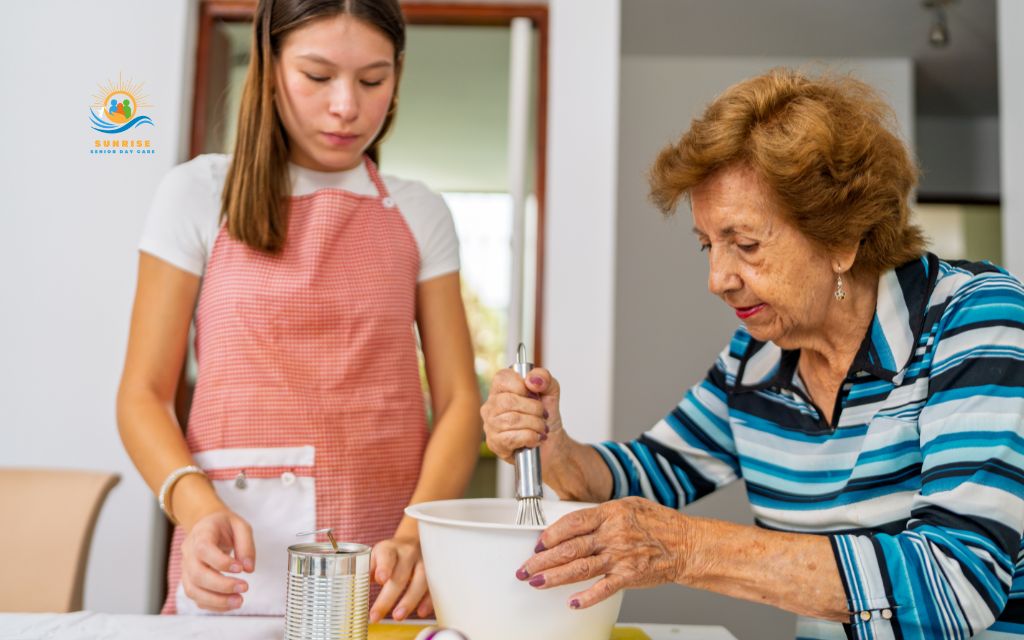
Spiritual wellness: Centering the heart and mind
For many seniors, retirement brings both the time and inclination for deeper spiritual reflection. Questions about legacy, meaning, and mortality naturally arise during this life stage, making spiritual wellness particularly important for emotional well-being and peace of mind.
Spirituality in the context of wellness encompasses gratitude practices, meditation, connection with nature, service to others, and exploration of life’s deeper questions. It includes traditional religious practices for those who find meaning in them, and embracing secular approaches to mindfulness and inner peace.
Studies published in the Journal of Religion and Health show that seniors who engage in regular spiritual practices experience lower rates of anxiety, better stress management, and improved immune function. Prayer, meditation, and mindfulness exercises have been shown to reduce inflammation, lower blood pressure, and improve overall life satisfaction.

Choosing a wellness-focused senior community
Not all senior living communities are created equal. Families evaluating options need to look beyond attractive marketing materials to assess whether a community truly supports all five pillars of wellness.
When touring potential communities, ask specific questions about their wellness philosophy and programming:
- How do they address physical fitness for residents with varying mobility levels?
- What opportunities exist for meaningful social connection beyond scheduled activities?
- Are intellectual stimulation programs tailored to individual interests and abilities?
- Do residents have chances to contribute their skills and find purpose within the community?
- How does the community support spiritual wellness for people of diverse backgrounds and beliefs?
Program diversity is a crucial indicator of a community’s commitment to holistic wellness. Look for communities that offer activities throughout the day and week, accommodating different energy levels and interests.
For example, morning tai chi classes, afternoon discussion groups, evening musical performances, and weekend outings demonstrate recognition that wellness happens throughout daily life, not just during designated activity hours.
Look for certified activity directors, qualified fitness instructors, and trained social workers who understand the complex needs of aging adults. Staff-to-resident ratios should allow for personalized attention and relationship building, as genuine connections between staff and residents enhance every aspect of the wellness experience.
Personalization distinguishes exceptional communities from adequate ones.
- Does the community conduct individual wellness assessments to understand each resident’s interests, abilities, and goals?
- Are activity programs adapted to accommodate different physical and cognitive abilities?
- Can residents opt out of scheduled activities to pursue personal interests without feeling isolated or judged
The right wellness-focused community will feel alive with energy, engagement, and genuine care for each resident’s complete well-being.
_________
Sunrise Senior Daycare – Your Trusted Wellness Partner
At Sunrise Senior Daycare, we help Denver families support their loved ones through comprehensive programs built on the 5 pillars of wellness. From physical fitness and social engagement to intellectual stimulation and spiritual well-being, we provide the complete care needed for seniors to thrive both physically and mentally.
For more information, contact us: (303) 226-6882
Conclusion
The journey toward wellness begins with understanding that aging doesn’t mean declining – it means evolving.
The 5 pillars of wellness provide a framework for maintaining vitality, connection, and purpose throughout retirement. Each pillar offers practical entry points that can be adapted to individual abilities and preferences.
The research consistently shows that seniors who embrace multi-dimensional wellness approaches experience better health outcomes and greater life satisfaction. More importantly, they maintain their sense of identity and continue to find joy in daily life.
As you explore your options, look for communities and programs that recognize the full potential of healthy aging. Seek environments where your interests are valued, your contributions matter, and your growth continues to be supported.
Frequently asked questions (FAQs)
What are the 5 pillars of wellness?
The five pillars of wellness are Physical, Social, Intellectual, Purposeful, and Spiritual wellness. Together, they form a holistic approach to health that supports seniors in maintaining strength, mental clarity, emotional balance, and a sense of fulfillment throughout retirement.
Why are the 5 pillars of wellness important for seniors?
These pillars ensure that aging adults experience more than just medical care – they enjoy connection, engagement, and purpose. A balanced wellness program helps reduce isolation, prevent cognitive decline, and improve overall happiness and longevity.
How can I tell if a senior community truly prioritizes wellness?
Look for communities that offer diverse, resident-driven activities and encourage participation in all five wellness areas. Ask to see their monthly activity calendar, meet the wellness director, and talk to residents about their daily experiences. Observe whether residents appear engaged and happy, and whether staff demonstrate genuine care for individual well-being.
What steps can families take to help aging parents improve wellness at home?
Even before transitioning to senior living, families can support wellness by promoting regular exercise, social visits, brain games, volunteer work, and mindfulness practices. These simple actions help seniors stay healthy, confident, and connected.




